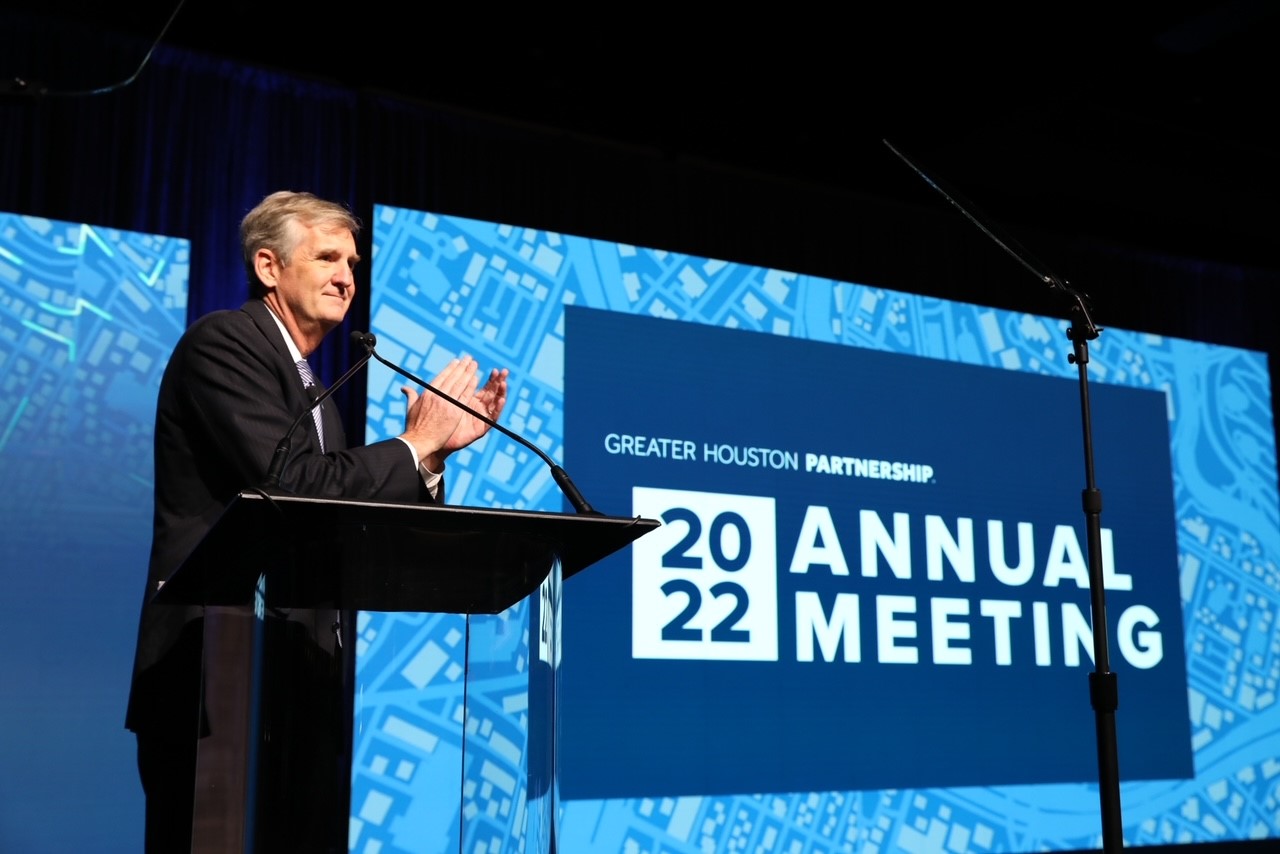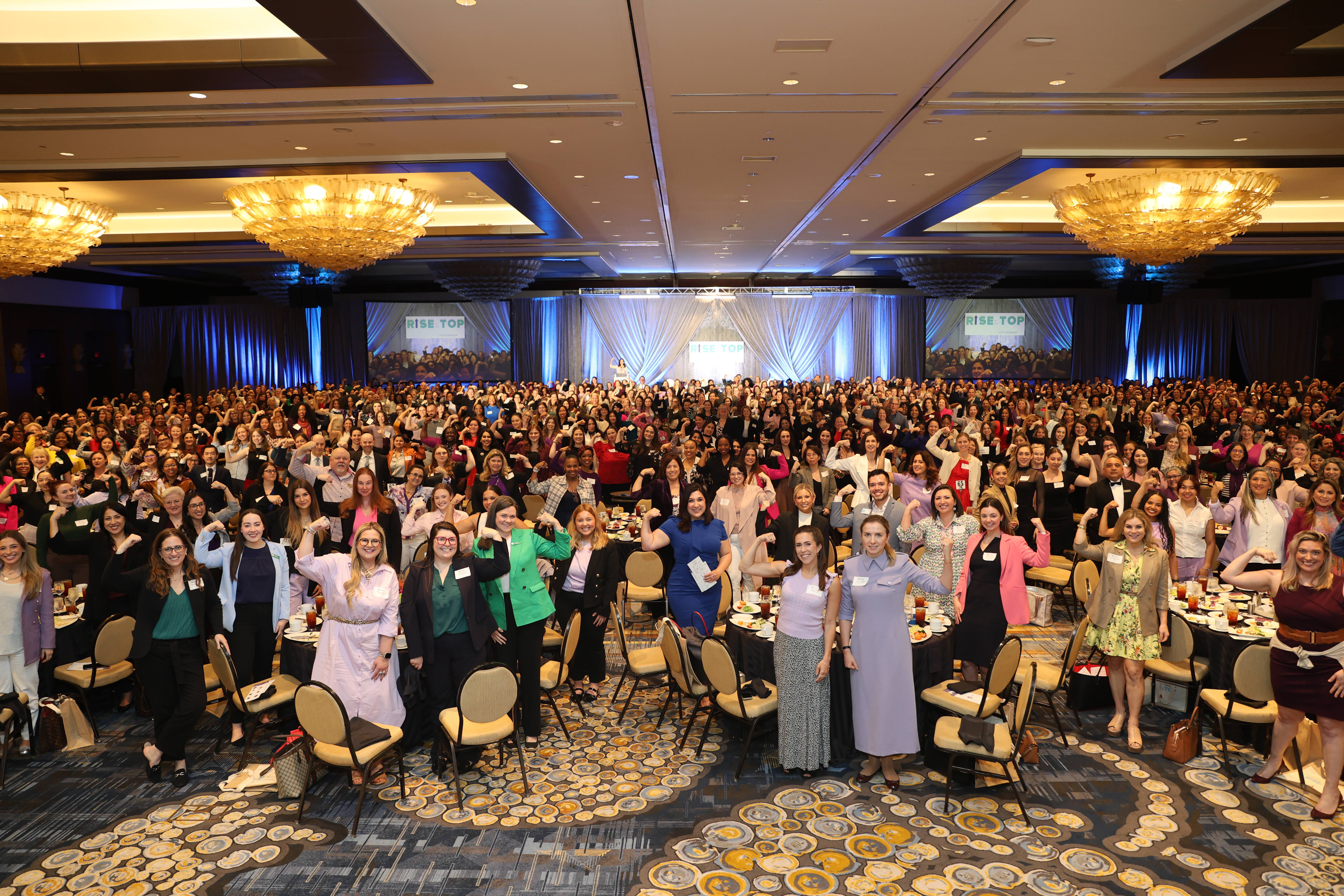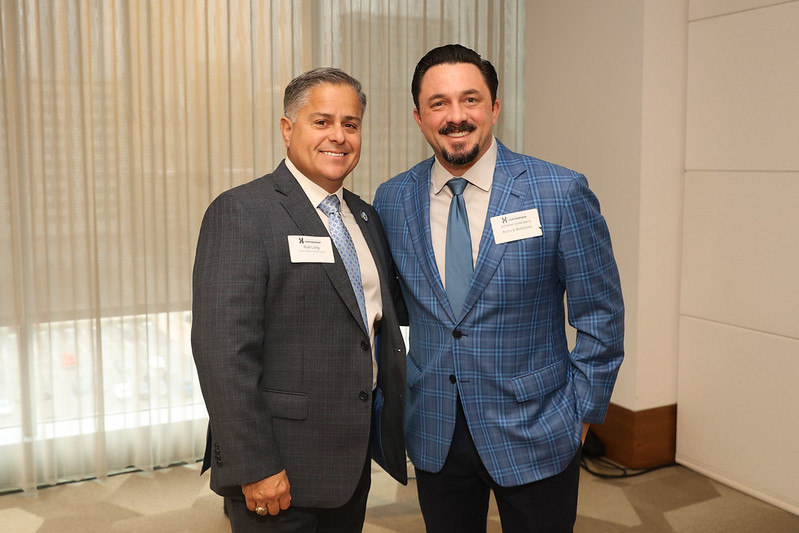Thad Hill's Remarks at 2022 Annual Meeting
Published Jan 28, 2022 by A.J. Mistretta
See 2022 Annual Meeting recap. Also see slides that complement these remarks.
It is great to be here today. I am incredibly honored to serve as chair of the Partnership this year and look forward to working with so many of you here in the room today.
Before I get started, I want to thank my wife, Margaret for being here today, along with two of our three kids, Channing and Sarah Margaret.
No doubt, the world has changed significantly over these last two years. How the world works and how each of us thinks about getting our work done has radically shifted.
At the Partnership, one thing has not changed. We remain focused on supporting Houston’s growth and creating opportunity for all Houstonians.
But in this period of rapid change, companies are rethinking how and where they work. This makes it especially critical that we bolster our efforts to attract companies and talent to Houston and get economic development right.
For decades, Houston’s growth was fueled by business leaders who understood economic ambition; individuals such as Jesse Jones, George R. Brown, and Oveta Culp Hobby along with Ben Love, Bob Onstead, and Charles Duncan, who we just recognized.
Fast forward a bit…to almost a decade ago, when in July of 2012, Forbes declared Houston “America’s Coolest City.”
At the time, Houston was leading the nation out of the Great Recession, fueled by the unbridled growth of the shale revolution.
But rather than resting on our laurels a decade ago, we at the partnership were asking the question: if we are going to be a great global city in 2020, 2030 and beyond, how would we need to transform our region to keep pace?
Well, over the last decade or so, we’ve focused on the answers to that question, bolstering the very foundations of what makes a great global city.
I think about our UpSkill Houston program tackling the middle skills talent shortage. Or our work alongside Mayor Turner and members of the legislature to reform Houston’s broken pension system.
Mayor Turner, it is so wonderful to see you here today – thank you for joining us.
I should mention our efforts to kick-start the regional movement to build our tech and innovation ecosystem through the launch of Houston Exponential and the HX Venture Fund.
And then of course we have our work on the Houston Energy Transition Initiative that Amy and Bob both mentioned.
Other partners have acted on bold visions like the TMC3 commercialization campus at the Med Center and the Houston Spaceport at Ellington Field, which are each on their way to drive innovation for decades to come.
We could also talk about the tremendous investment in our greenspaces or that we are now one of the leading culinary and cultural capitals of the world, with so many acclaimed institutions.
All of this hard work was steered by so many in this room, and you have helped position Houston as an attractive market in which to live and do business.
And it’s paying off.
We’ve picked up four new Fortune 500 headquarters since 2017, either through growth or relocation, including, as Amy mentioned, the mega-wins of Hewlett Packard Enterprise and NRG. Houston had the largest net pick-up of Fortune 500 headquarters among the major metros. Consider that over the same timeframe, Dallas remained flat, and New York lost 16 Fortune 500 headquarters.
We’ve also had a number of huge manufacturing wins, including the four million square foot Daikin Texas Technology Park, an HVAC engineering and manufacturing facility in northwest Harris County – that’s larger than 50 football fields and employs more than 8,000 people.
Those are some of the big wins – the home runs, if you will – but we are also hitting important singles and doubles in our innovative target sectors and traditional bases of industry.
In fact, Site Selection Magazine, the economic development trade publication, consistently ranks Houston among the top 2 or 3 cities in the entire country for annual economic development wins, often trading places with Chicago and Dallas each year.
And importantly, these wins are creating opportunity. In fact, Houston has a higher percentage of middle class-or-better jobs than any other major metro in the country.
So, overall, Houston is doing well, and I would add: we’ve really upped our economic development efforts in the last 2 to 3 years.
But the competition is stiff and getting stronger.
I could rattle off the list of projects we have lost out on over the last few years: of course, there was the Amazon HQ2 project, or the Tesla and Samsung plants which landed in Austin or the Honeywell HQ that landed in Charlotte.
Or it could be wins that went to the DFW Metroplex such as the Toyota headquarters, McKesson, the PGA, Charles Schwab, and several others.
I ask these questions: are we prepared to meet both the challenges of our changing economy, and will we capture the opportunities these changes bring?
The good news is we are doing a lot of things right, but we simply must do better.
We must amp up the tactics that are working, change the tactics that aren’t, and launch new approaches to accelerate growth.
I’ve been working closely with the Partnership team to determine the areas to really press, leveraging an excellent base of pro bono research from BCG along with input from past Partnership chairs, regional and state economic development groups and even our competitors.
I should pause to welcome Adriana Cruz who is joining us today. She is Governor Abbott’s head of economic development and leads the state’s business recruitment and attraction efforts. Thank you for being here today.
We’ve categorized our key actions into four areas that we will advance with your help.
The first, and most important, is to execute a true, business-led, economic development program that further mobilizes the expertise, energy and guidance of our regional business leadership.
The second area is to accelerate the work of our sector-specific plans to grow strong industry clusters.
Third, the Partnership will accentuate and improve our collaboration and engagement with our regional allies across our entire 12-county footprint.
Finally, we will embolden our efforts to elevate the global perceptions and understanding of today’s Houston.
Let’s start with the first, and perhaps most important in regard to our organization: the development and execution of a true “business-led” economic development program.
I would like to recognize Jay Brown, President and CEO of Crown Castle, who is chairing our board-level Economic Development and Trade Steering Committee.
He will work alongside our 11 committee chairs to drive our economic development work forward. Their names are on the screen.
This year we are refreshing these committees to function in a very focused manner. The work will be new and energizing, focusing our time and efforts on attracting a curated list of prospects in our target sectors.
We’ve learned a few lessons from other markets, and one thing is clear – leveraging local business leaders is a key to success for both sourcing new economic opportunities and then advancing and closing deals through leader-to-leader outreach and relationship building.
Bob, Jay, and I are calling on business leaders to take part in this committee work, and we will call upon specific leaders to be more directly engaged in direct outreach efforts on Houston’s behalf in the coming months.
Shifting to our next area. A key part of our Houston Next strategy is our focused work across six key industry sectors: Energy 2.0, Life Sciences, Aerospace and Aviation, Manufacturing and Logistics, Digital Tech, and Headquarters.
To help drive this work, we have brought hired subject matter experts onto the staff in the Energy 2.0, Life Sciences, and Aerospace sectors.
Our next step is to develop deep “playbooks” for how we execute and win in these sectors.
We must sharpen our approach with clear, sector-based action plans aimed at very specific companies.
We must be laser-focused, rather than scatter-shot. It sounds simple, but not many cities do this well.
The good news is we’ve already started the process.
With the help of a number of partners across the region, we are working with an outside expert firm to build out a detailed and rigorous life sciences playbook, and plan to expand this to cover each of the key verticals.
We know we have the real estate, the assets, the talent-base and the leadership to win, and these playbooks will help us align and better sell Houston.
Another very important priority, will be to improve our efforts to better engage and highlight our very talented regional allies and the areas they represent.
There are more than 35 economic development organizations in the Houston area, and we enjoy a strong relationship with most all these groups.
We must have a vibrant core, a vibrant Houston itself. But broader regional prosperity and growth is also important for our competitiveness.
While we regularly collaborate with these allies, we can do much more to better showcase the entire asset base of our region, harnessing what each community brings to the table.
For instance, we know large-scale manufacturers, on the order of Tesla and Samsung, want to locate in the rural periphery of a major metro. Think about these projects in relation to Austin – neither is in Austin proper. Dallas has many similar examples related to Richardson, Plano, Frisco and McKinney.
And let me tell you, these suburban communities – particularly in North Texas – are hyper-competitive with each other. They aggressively market and have created special programs and incentives to attract companies into their specific communities. Through this intense competition, prospect companies have no doubt that the Metroplex wants them – it’s just a matter of which community fits best. The whole idea is that we are all better off when the city complements the region, and vice versa.
We are in the early stages of developing a Houston Economic Development Summit for both our government and EDO allies later this spring – this is our first step toward getting on the same page – sharing resources, tapping into national experts, and further leveraging our region as an entire area of opportunity.
Last, but not least, we must elevate the perceptions of Houston.
We know that people’s pre-conceived notions of Houston often lag reality – we’ve seen it in study after study.
We’ve got to do a better job of telling Houston’s story – and that story is best told face-to-face.
With minimal travel in the last couple of years, it is essential that we intensify our domestic and international missions to top cities around the globe.
This face-to-face outreach is critical, so we’ll be taking groups of business and civic leaders to both the West and East Coasts calling on tech, life sciences, energy 2.0 companies along with firms considering new headquarters locations.
We’ll kick off our international outreach at the end of March in Mexico City and Monterrey, with missions to Europe and Asia in the works for later in the year.
We are also reenergizing our work with the site selection consultants who help companies navigate the location process. We’ll host a number of them throughout the year for tours of Houston and we’ll connect with them during our missions around the world.
And with all of this outreach, it is critical that we get our sales pitch right – how do we shift those inaccurate perceptions of Houston?
We’ve been working with partners at Houston First and the Mayor’s Office to employ a unified messaging platform that we will all share. This platform focuses on not just the city, but really captures the ethos of the broader region. And importantly, by working together, and employing the same messaging, we can amplify each other’s efforts.
I wanted to share a sneak peek at a brief promo video we are working on.
This messaging is geared to appeal to those who want to solve the problems that matter and do something bigger than themselves but doing it in partnership with others.
We will leverage this messaging across all of our work including our trade missions, site selector engagement, and marketing campaigns.
I’ll close with this. The Partnership has been doing good work in this area for years, and many in this room have much to be proud of.
But now is the time to really step it up. We can and we will do better.
These four key action areas will provide a strong platform for success going forward.
The mission is clear, and we are mobilizing. And I hope you will join us.
I am excited about the year ahead because Houston is positioned to win.
With the expertise and hard work of leaders like yourselves, we will be a great global, and even more inclusive, city for years to come.
Thank you.
 Press Releases
Press Releases




















